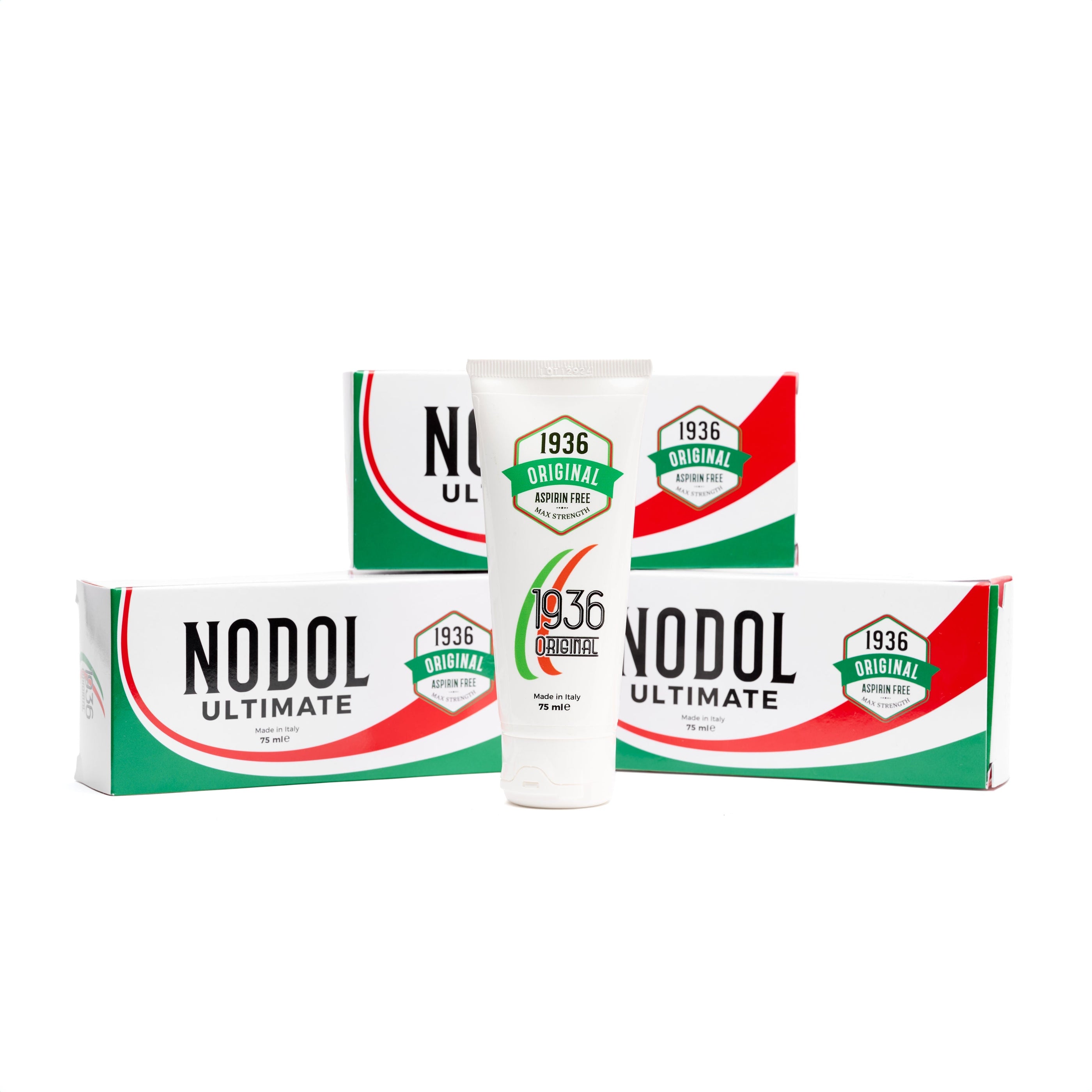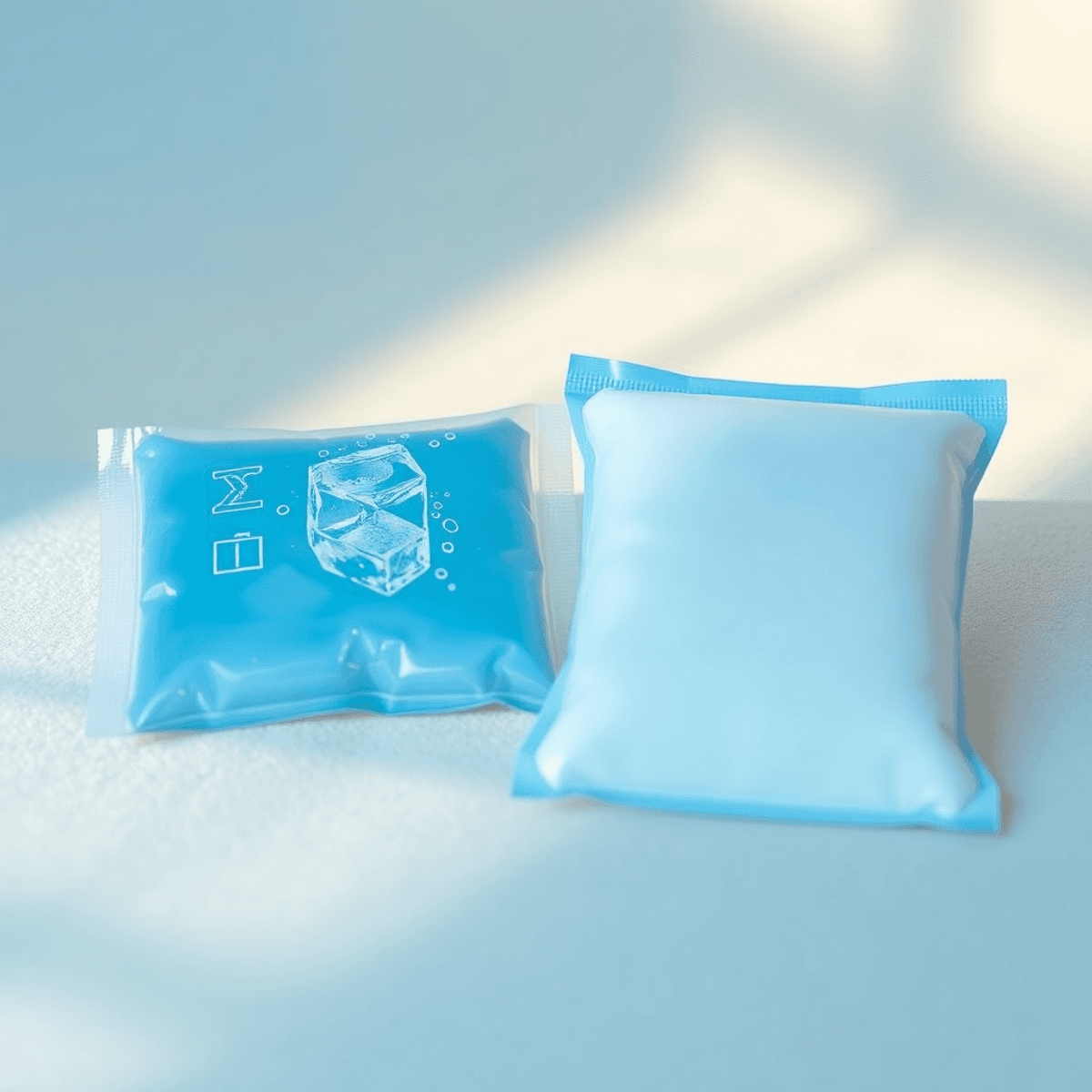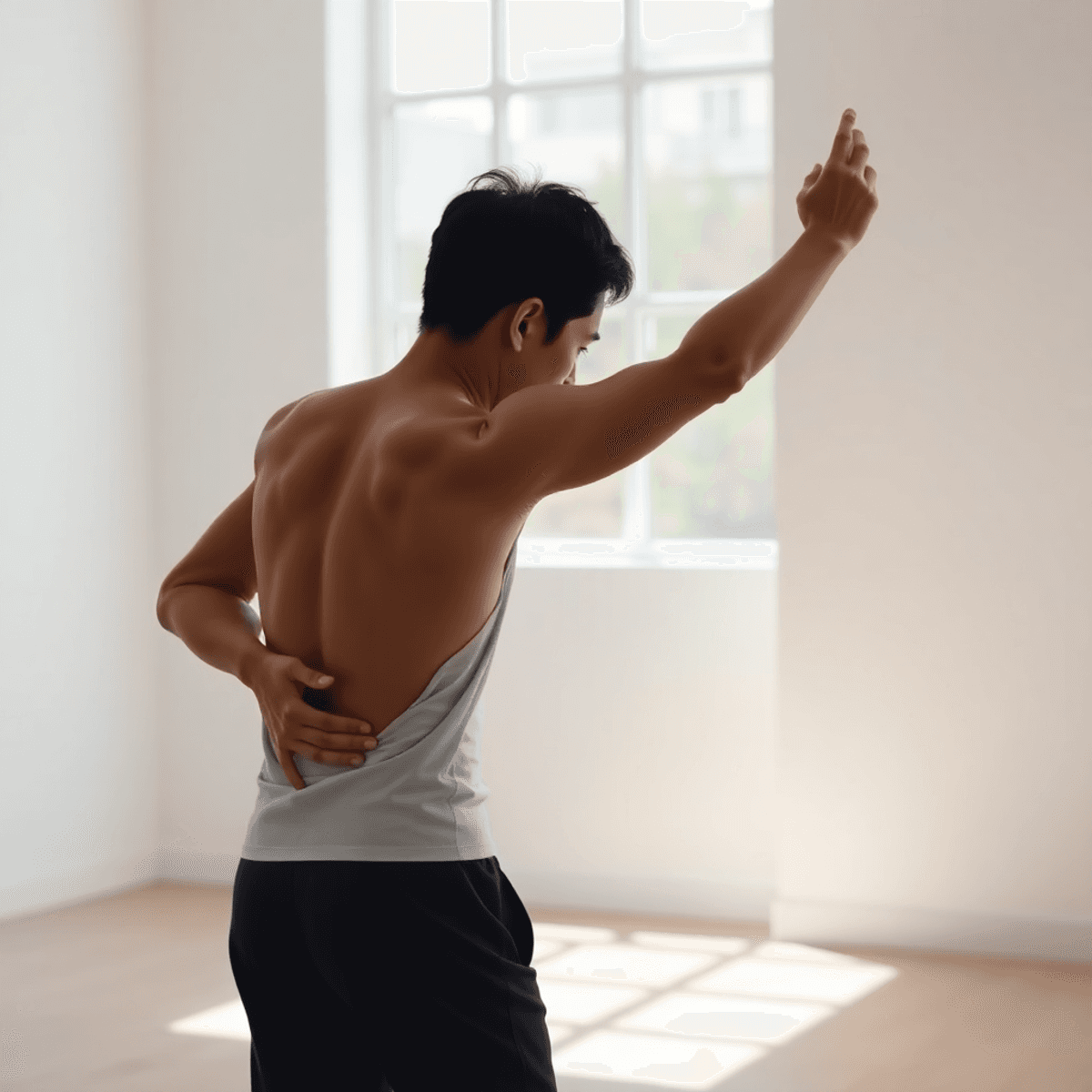Finding Relief in Everyday Pain: Your Ultimate Guide

Introduction
Everyday pain, whether it's a stiff neck, sore muscles, or aching joints, can greatly affect your daily life. These ongoing discomforts often disrupt regular activities and overall well-being. Finding Relief in Everyday Pain is not just about quick fixes; it's about finding effective ways to relieve pain that improve your quality of life. In this guide, you'll discover different techniques to manage and reduce everyday pain, learn why personalized approaches are important, and understand how to build a supportive community around chronic discomfort.
Understanding Everyday Pain
Everyday pain is a common occurrence that affects people in various ways, disrupting daily activities and diminishing quality of life. It generally refers to the persistent or intermittent discomfort experienced in different parts of the body. This type of pain can stem from various sources and is not limited to one specific area or condition.
Common Types of Everyday Pain
- Back Pain: Often caused by poor posture, prolonged sitting, or strenuous activities. It affects millions worldwide, making tasks like lifting and bending challenging.
- Muscle Pain: Typically results from overuse, tension, or minor injuries. Muscle aches are prevalent among individuals engaged in physical activities without proper preparation.
- Joint Pain: Frequently associated with conditions such as arthritis, this type of pain can lead to stiffness and inflammation, impacting mobility and comfort.
Factors Contributing to Chronic Discomfort
Several factors can contribute to chronic discomfort:
- Sedentary Lifestyle: Lack of regular physical activity can lead to muscle weakness and increased susceptibility to pain.
- Poor Posture: Incorrect alignment while sitting or standing places unnecessary strain on the body.
- Stress and Mental Health: Stress can exacerbate pain perception, making existing discomfort feel more intense.
- Diet and Nutrition: An unbalanced diet lacking anti-inflammatory foods may worsen conditions like arthritis.
Understanding these elements helps in identifying effective strategies for managing everyday pain. For instance, incorporating products that offer natural pain relief into your routine can significantly alleviate discomfort. These products are designed to relieve back, joint, muscle, knee, and shoulder pain while also addressing skin problems like atopic eczema and dermatitis. By paving the way for a more comfortable and fulfilling life through such solutions, managing everyday pain becomes a less daunting task.
Strategies for Managing Everyday Pain
1. Exercise and Physical Activity
Regular exercise plays a significant role in managing everyday pain, offering both preventive and therapeutic benefits. Engaging in physical activity can:
- Enhance flexibility and strength: Regular movement helps maintain the flexibility of muscles and joints, reducing stiffness and the likelihood of injury.
- Improve circulation: Exercise boosts blood flow, which can help alleviate pain by promoting healing and reducing inflammation.
Incorporating exercise into your routine doesn't have to be daunting. Here are some recommended activities tailored for pain relief:
Recommended Exercises for Back Pain Relief
Targeted exercises can offer significant relief for back pain sufferers. Some effective exercises include:
- Pelvic Tilts: This simple exercise helps strengthen the lower back and abdominal muscles, providing support to the spine.
- Bridging: By lifting your hips while lying on your back, you engage your core and lower body muscles, aiding in stabilization.
- Cat-Cow Stretch: This gentle stretch enhances spine flexibility, easing tension in the back.
Effective Muscle and Joint Strengthening Activities
Certain activities can be particularly beneficial in strengthening muscles and joints:
- Swimming: The buoyancy of water provides a low-impact environment that reduces stress on joints while allowing for a full range of motion. It's ideal for those with arthritis or joint pain.
- Cycling: A great way to build leg strength without the high impact associated with running. It also promotes cardiovascular health.
- Yoga: Focuses on stretching and strengthening through various poses, helping improve balance, flexibility, and muscle tone.
Maintaining proper exercise form is crucial to avoid exacerbating pain. Always start slowly, gradually increasing intensity to prevent injury.
Exercise not only helps manage physical discomfort but also releases endorphins—natural mood lifters that can reduce the perception of pain. Incorporating these activities into your daily routine can significantly contribute to Finding Relief in Everyday Pain.
The importance of posture in managing discomfort cannot be overstated. Proper body mechanics reduce strain on muscles and joints during both activity and rest.
2. Posture and Body Mechanics
Finding Relief in Everyday Pain often begins with understanding the role of posture in preventing and alleviating discomfort. Your body's alignment plays a crucial part in this process, as improper posture can lead to increased strain on muscles and joints, resulting in pain. Regular focus on maintaining good posture can help reduce tension and prevent chronic issues from developing.
To maintain proper posture throughout the day, consider these tips:
- Ergonomic Workspace Setup: Ensure your chair supports the natural curve of your spine. Your feet should rest flat on the floor, with your knees at a right angle.
- Mindful Sitting: When sitting, keep your back straight and shoulders relaxed. Avoid slouching or leaning forward excessively.
- Balanced Standing: Distribute your weight evenly on both feet. Avoid locking your knees or leaning on one leg for extended periods.
- Proper Lifting Techniques: Bend at the knees, not the waist, keeping objects close to your body when lifting heavy items.
- Frequent Breaks: Take regular breaks to stretch and move around, especially if you spend long hours sitting.
Incorporating these practices into your daily routine can significantly improve body mechanics and contribute to effective pain management. Proper posture complements exercise and physical activity for pain relief, emphasizing a holistic approach to managing everyday discomfort.
Holistic Approaches to Pain Management
1. Nutrition and Diet
Exploring the connection between nutrition and diet for managing everyday pain reveals a wealth of possibilities. An anti-inflammatory diet is a cornerstone in this approach, designed to reduce inflammation, which is often at the root of chronic discomfort. Emphasizing whole foods, these diets are rich in:
- Fruits: Berries, cherries, oranges, and apples are packed with antioxidants and vitamins that combat inflammation.
- Vegetables: Leafy greens like spinach and kale, along with cruciferous vegetables such as broccoli and Brussels sprouts, are vital for their high fibre content and anti-inflammatory properties.
- Whole Grains: Foods like oats, quinoa, and brown rice provide essential nutrients while maintaining blood sugar levels, which can influence inflammatory responses.
Incorporating these foods can be particularly beneficial for conditions like arthritis. The omega-3 fatty acids found in fatty fish (such as salmon or sardines) have shown promise in reducing joint stiffness and pain. Similarly, nuts and seeds offer healthy fats that support joint health.
Herbs and spices also play a crucial role. Turmeric, with its active compound curcumin, is renowned for its potent anti-inflammatory effects. Ginger can soothe muscle soreness post-exercise, making it a valuable inclusion for those managing everyday aches.
A balanced diet focusing on these elements not only helps alleviate symptoms but also supports overall health, providing energy and vitality needed to engage in other pain management strategies like exercise or mindfulness practices.
Through careful selection of anti-inflammatory foods for managing everyday pain, you can potentially reduce reliance on medications and improve your quality of life naturally. This approach underscores the importance of personalized relief strategies tailored to your specific needs and preferences.
Finding Relief in Everyday Pain often requires exploring multiple avenues; nutrition stands as a powerful tool within your control to influence how your body reacts to stressors. By understanding the impact of what you consume daily, you take an active step towards managing discomfort more effectively.
Transitioning from dietary adjustments to incorporating mindfulness practices further enhances your ability to cope with pain holistically.
2. Mindfulness and Mental Health
Understanding the connection between mindfulness practices and pain relief can significantly improve your approach to managing everyday discomfort. Techniques such as meditation and deep breathing exercises play a crucial role in changing how you perceive pain. By focusing on the present moment, these practices help reduce stress and anxiety, which are often linked to increased pain sensitivity.
How Mindfulness Practices Help with Pain Relief
- Meditation: Engaging in regular meditation can enhance your ability to cope with chronic pain by fostering a sense of calm and relaxation.
- Deep Breathing: Incorporating deep breathing exercises helps regulate your body's stress response, leading to a decrease in tension and subsequent pain relief.
Equally important is the role of quality sleep in maintaining overall health and managing discomfort. Poor sleep can worsen pain perception, making it crucial to establish a consistent sleep routine. Ensuring a peaceful bedtime ritual aids in achieving restorative sleep, thus supporting physical recovery and emotional well-being.
Combining mindfulness practices with other strategies discussed can provide a comprehensive approach to finding relief from everyday pain. Each method contributes uniquely to reducing discomfort, underscoring the importance of exploring various techniques for effective management.
Seeking Professional Help: When and How?
1. Physiotherapy vs Chiropractic Care
Understanding the Differences:
When dealing with persistent everyday pain, you may wonder whether to choose physiotherapy or chiropractic care. Both approaches offer unique benefits, but understanding their differences can help guide your decision.
- Physiotherapy focuses on improving mobility, strength, and function through exercises, manual therapy techniques, and education. Physiotherapists often address pain stemming from injuries, surgeries, or chronic conditions by designing personalized rehabilitation programs.
- Chiropractic Care emphasizes spinal adjustments and manipulations to enhance nervous system function. Chiropractors are well-known for addressing back pain and musculoskeletal issues by realigning the spine to alleviate discomfort and improve overall health.
Choosing between physiotherapy and chiropractic care depends on the nature of your pain and personal preferences.
When to Seek Professional Guidance:
Persistent pain that disrupts daily activities or fails to respond to self-care measures warrants professional attention. Here are a few scenarios when seeking guidance might be beneficial:
- Recurring Back Pain: If you're experiencing regular back pain that limits your mobility or quality of life, consulting a chiropractor can help identify potential misalignments in your spine that could be contributing to the issue.
- Post-Injury Rehabilitation: For those recovering from an injury or surgery, physiotherapy is often recommended. A physiotherapist can guide you through exercises tailored to restore strength and flexibility without exacerbating the condition.
- Chronic Conditions: Individuals suffering from chronic conditions like arthritis may benefit from both therapies. Physiotherapy can provide exercises to enhance joint function, while chiropractic care might offer relief through adjustments.
- Holistic Approach: Some individuals find relief by integrating both therapies. Consulting with professionals who understand your specific needs can lead to a comprehensive treatment plan.
Each approach has its strengths in managing everyday pain issues. Considering these factors can assist in deciding which path aligns best with your health goals. Engaging with healthcare professionals not only offers tailored solutions but also ensures safety and efficacy in managing persistent discomfort.
2. Exploring Complementary Therapies
Complementary therapies can provide additional relief for everyday pain. Two effective methods worth considering are massage therapy and chiropractic care.
Benefits of Massage Therapy
Massage therapy is widely recognized for its ability to relieve muscle tension and improve blood circulation. By applying pressure to specific areas of the body, massage offers several benefits:
- Relaxing Muscles: The manipulation of soft tissues promotes relaxation, reducing tension that often contributes to pain.
- Improving Circulation: Enhanced blood flow helps deliver nutrients to muscles and remove waste products more efficiently, facilitating the healing process.
- Reducing Pain: The soothing nature of massage can alleviate discomfort by stimulating the release of endorphins, which are natural painkillers.
Chiropractic Adjustments
Chiropractic care focuses on maintaining spinal health and its impact on overall well-being. Regular adjustments can significantly benefit individuals experiencing persistent everyday pain:
- Enhancing Nervous System Function: Proper spinal alignment ensures optimal nervous system functionality, improving communication between the brain and the rest of the body.
- Alleviating Back Pain: Misalignments or subluxations in the spine often cause back pain; chiropractic adjustments correct these issues, offering relief.
- Promoting Overall Health: By maintaining spinal health, chiropractic care supports a holistic approach to wellness, potentially preventing future discomfort.
Exploring these therapies provides an opportunity to manage everyday pain beyond traditional methods. Engaging with massage therapists and chiropractors could be an essential part of a personalized strategy for finding relief in everyday pain.
Creating a Supportive Community Around Chronic Discomfort
Living with everyday pain often feels like an isolating journey. The importance of sharing experiences in managing everyday pain with others who understand the challenges involved cannot be overstated. Connecting with people who face similar struggles offers not just emotional support, but practical advice as well.
1. Shared Experiences
Engaging in conversations about your personal journey with pain can provide relief. It helps to know you are not alone in your struggle.
2. Exchange of Practical Tips
Discovering what works for others can inspire new strategies for pain management. Whether it's a novel exercise routine, dietary adjustments, or relaxation techniques, these shared insights can be invaluable.
3. Emotional Support
A community fosters empathy and understanding, which plays a crucial role in mental well-being. Knowing there are people who genuinely comprehend your situation can reduce stress and anxiety associated with chronic discomfort.
4. Online Forums and Support Groups
These platforms offer accessibility and convenience, allowing you to connect with others at any time. They provide a safe space for sharing stories, asking questions, and receiving encouragement.
Building a network around shared experiences in managing pain is essential for holistic healing. This supportive environment empowers individuals to take control of their health journeys, promoting resilience and hope amidst daily challenges.
Personalized Relief Strategies: The Key Takeaway From This Guide!
Each person's experience with pain is unique, making a one-size-fits-all solution ineffective. Personalized approaches to managing everyday pain are essential due to these individual differences. Understanding your body's specific needs and responses can significantly enhance your journey toward relief.
1. Assess Your Pain Patterns
Begin by identifying when and where you experience discomfort. Is it related to certain activities or times of day? This information is critical in tailoring your pain management plan.
2. Experiment with Different Strategies
The methods discussed in our guide offer various avenues for relief. Consider trying different combinations of exercises, dietary changes, and mindfulness practices to discover what works best for you.
For example, if back pain is a recurring issue, incorporating targeted exercises alongside maintaining proper posture might provide the most benefit.
3. Consult Professionals for Tailored Advice
Sometimes, expert guidance can shed light on approaches you may not have considered. Physiotherapists or chiropractors can offer insights based on your specific condition.
Finding relief in everyday pain is a journey that requires patience and an open mind. Embrace the process of exploration to find what truly alleviates your discomfort. The key lies in understanding that what works for someone else may not work for you—and that's perfectly okay.
Recommended Resources For Further Reading And Exploration!
Discover tools and insights to enhance your journey towards relief from everyday pain. Here are some useful resources and products that can assist with pain management:
Books:
- The Mindfulness Solution to Pain by Dr. Jackie Gardner-Nix
- Heal Your Pain Now by Dr. Joe Tatta
Tools & Products:
- Foam rollers for muscle relaxation
- Ergonomic chairs to support proper posture
Engage with these resources to broaden your understanding and find effective strategies tailored to your needs.












